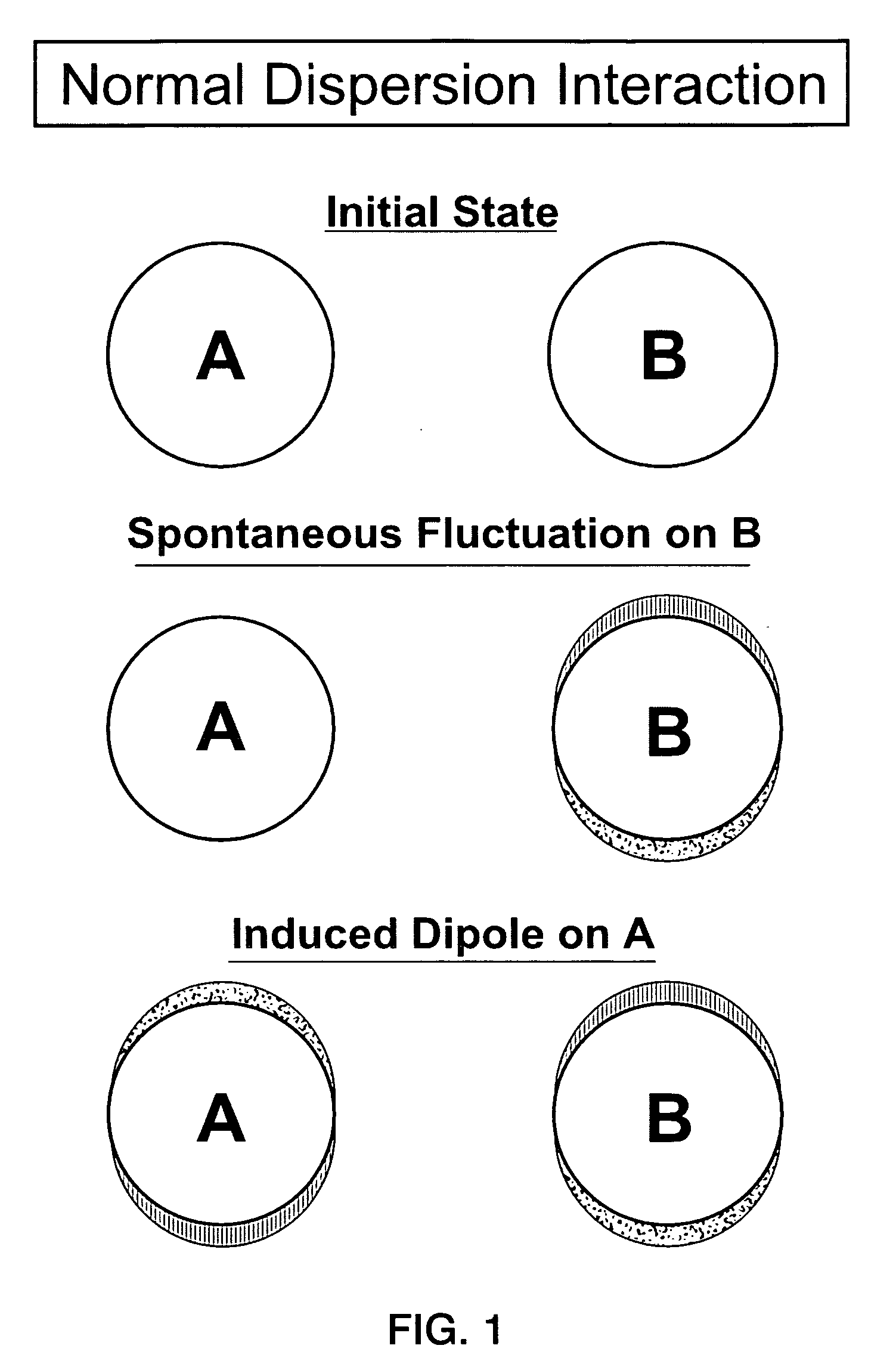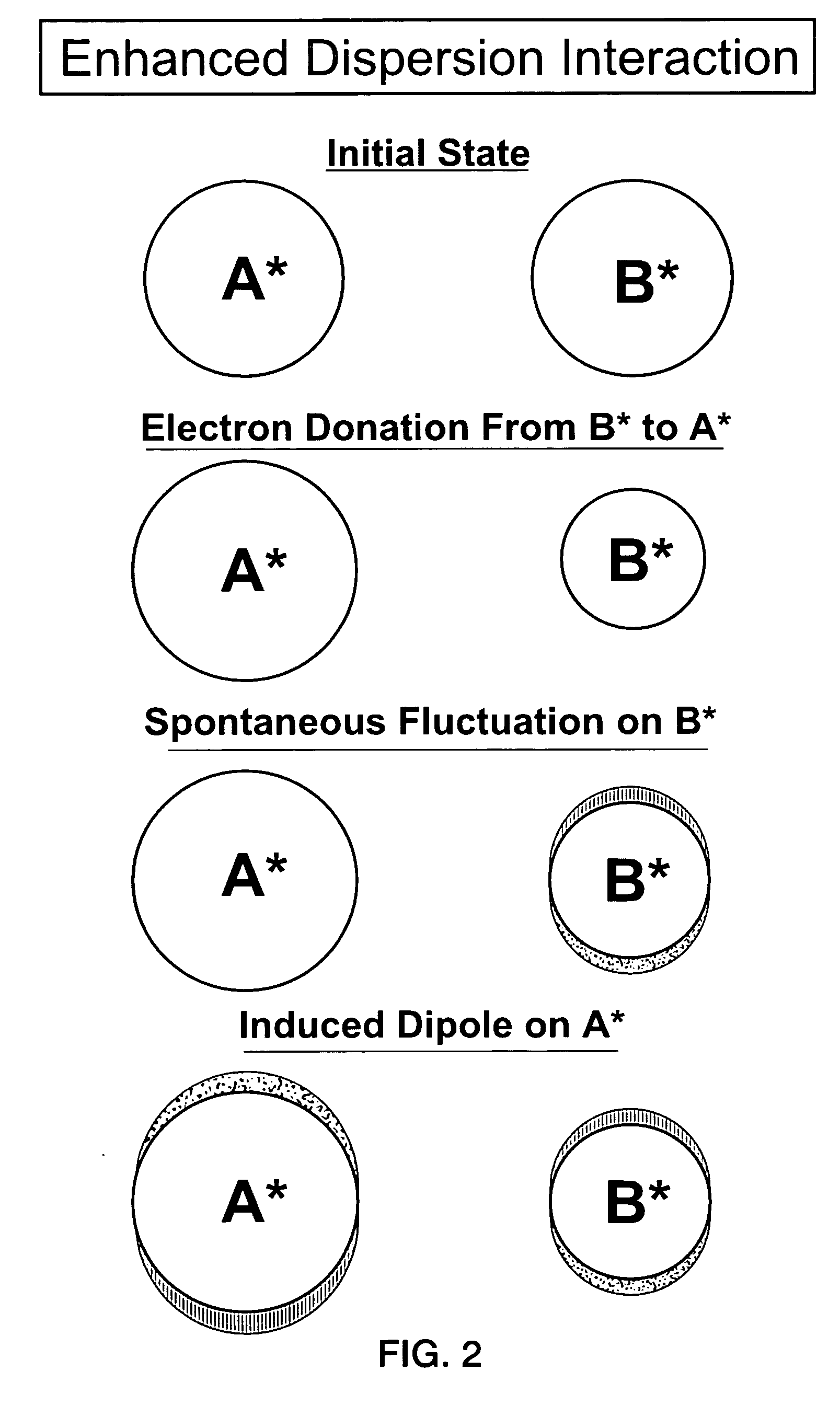Nanocomposites from stable dispersions of carbon nanotubes in polymeric matrices using dispersion interaction
- Summary
- Abstract
- Description
- Claims
- Application Information
AI Technical Summary
Benefits of technology
Problems solved by technology
Method used
Image
Examples
Embodiment Construction
should be read in the light of the accompanying Drawings, wherein:
[0017]FIG. 1 is a schematic illustrating a standard dispersion interaction (induced dipole-induced dipole interaction) according to the present invention, which is a weak intermolecular force arising from the attractive interaction between dipoles transciently induced between entities A and B; and
[0018]FIG. 2 is a schematic illustrating an enhanced dispersion interaction according to the present invention, wherein electron density transferred to entity A* from entity B* (electron donor) is more weakly bound and more polarizable. The spontaneous dipole formed on B* induces a larger dipole on A*, resulting in a greater dispersion interaction.
DETAILED DESCRIPTION OF THE INVENTION
[0019]The essence of this work is the formation of a dispersion interaction, especially an enhanced dispersion interaction between a host polymer matrix and the carbon nanotubes (CNTs) dispersed therein. The CNTs employed in the present invention...
PUM
| Property | Measurement | Unit |
|---|---|---|
| Dispersion potential | aaaaa | aaaaa |
Abstract
Description
Claims
Application Information
 Login to View More
Login to View More - R&D
- Intellectual Property
- Life Sciences
- Materials
- Tech Scout
- Unparalleled Data Quality
- Higher Quality Content
- 60% Fewer Hallucinations
Browse by: Latest US Patents, China's latest patents, Technical Efficacy Thesaurus, Application Domain, Technology Topic, Popular Technical Reports.
© 2025 PatSnap. All rights reserved.Legal|Privacy policy|Modern Slavery Act Transparency Statement|Sitemap|About US| Contact US: help@patsnap.com



